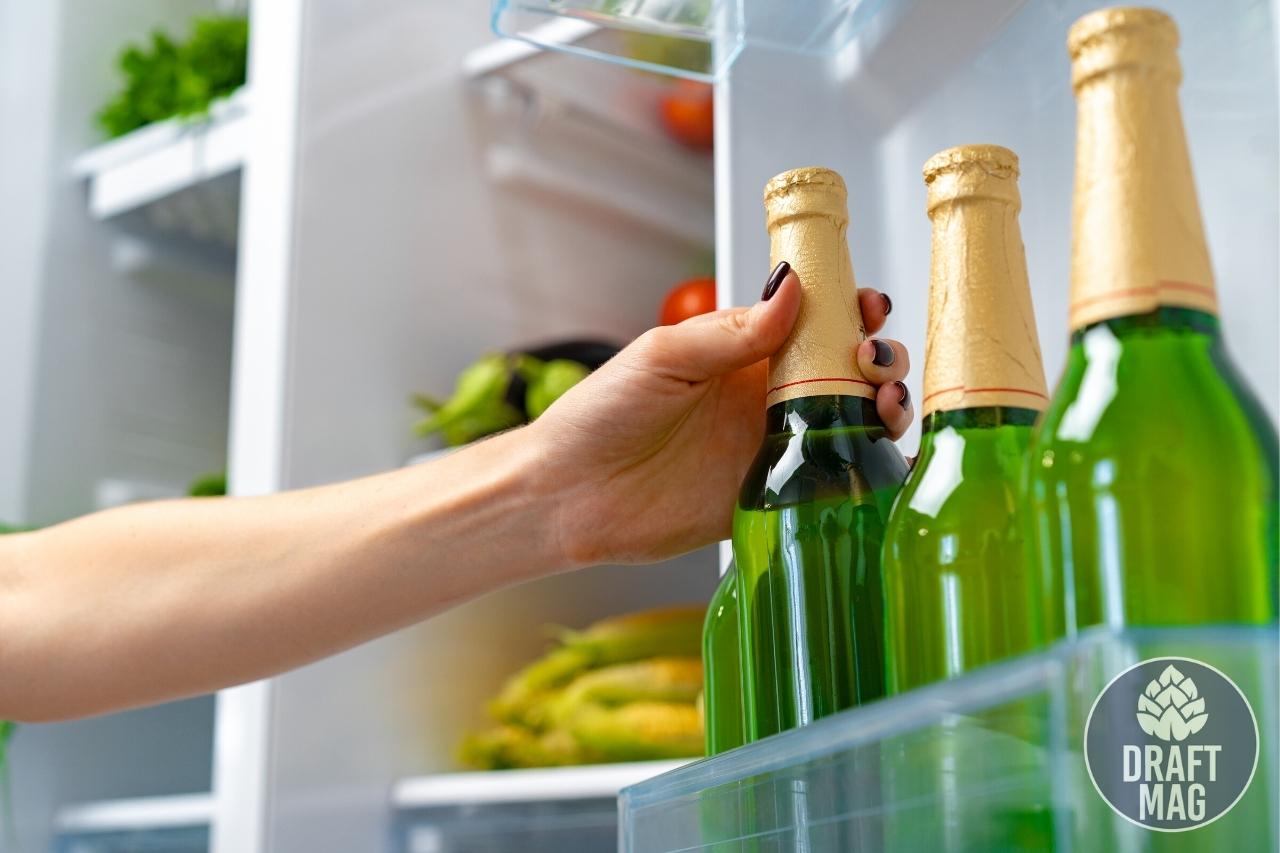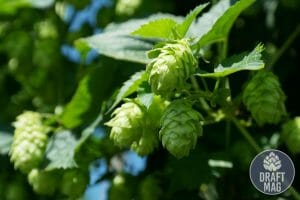Beer Fridge Temp: A Guide to the Ideal Temperature for Storing Brews

Beer fridge temp is the most important thing when it comes to getting your beers right, because let’s face it, off temperatures can kill the entire essence of a beer. There is nothing as bad as a warm beer, and over time, there has been a lot of debate on the ideal temperature for storing and serving beers.
Every beer style has a certain set temperature, so let’s dive into all the details here.
What Is the Ideal Beer Fridge Temp?
Almost all beers should be kept chilled between 50 F to 55 F for those who are new to the world of beer, as this will help the beer stay fresh and drinkable. For people who just want to gulp a pint on a hot summer afternoon, a well-chilled beer within this range is best.
But for someone who wants a full-circle craft beer drinking experience, it is important to strike a good balance between the ideal serving temperature and the warmth that would bring out all the right flavors from the beer. This is mostly the case with strong Stouts and Bocks.
According to the American Homebrewers Association, “cold beer temperatures show the volatilization of the aromatic compounds, causing them to linger in the beer. When these compounds are not released, it changes the flavor and aroma of the beer, sometimes to a point where it may come across as thin and tasteless.”
Check out the temperatures for serving different styles of beers in this section.
-
American Macro Lagers
Macro and Light Lagers are simple to store. They can go anywhere between 33 F to 40 F. This is said to be an average refrigerator temperature, with the sweet spot being between 36 F and 38 F.
-
Pale Lagers
For most Lagers, 38 F is considered a low point pushing to a maximum of 40 F. Anything beyond that and the beer can tend to become flat. Anything lower may lead the flavors to be masked.
The hoppier the beer, the warmer the temperature should be. This is also the right Budweiser beer fridge temperature and the best temperature for Corona beer too.
-
Oktoberfest Lagers, Amber Lagers
These are dark beers and slightly heavier than their lighter counterparts. These beers are best served slightly warmer within a range of 45 F to 50 F. Even stronger ones can be served higher than these temperatures.
-
India Pale Ale
IPAs have various sub-types. These are strong beers with high levels of bitterness and hoppiness. These beers are best served above the regular refrigerator temperature because IPAs have strong citrusy, fruity flavors that grow on you at slightly higher temperatures than icy-cold ones.

However, classic American IPAs are best served at or above 50 F. They are dank and dark with high IBUs and ABVs.
This is the best temperature for beer fridge IPA if you are looking for a full drinking experience.
-
Sour Beers
These are funky Sour Ales, slightly strong and have many sub-types. Each of their serving temperatures can vary.
Fruity, refreshing ones can be served at under 55 F, while some leathery ones can go up to 45 F. Some Lambic beers or Fruity Sours can be served at 45 F to 50 F, with the best temperature being 47 F as they are dry and acidic with a slightly pungent taste. With Gose beers, a temperature under 40 F is said to be best.
-
Blonde Ales or Cream Ales
These beers are light-bodied with a delicate mouthfeel. These are best served chilled. It is best to serve these beers between 40 F to 45 F.
-
German Pilsners
These beers are extremely light and easy to drink. Their serving beer temps can go between 40 F to 45 F.
-
Wheat Beers
There are different types of beers here: Belgian-style Wit, American Wheat, German Wit, Hefeweizens, or the Berliner-style Wit. Most of these are cloudy with a medium to light body. They are lighter on hop flavor and higher on malt flavor.
Most of these are best served between 40 F and 45 F. Hefeweizens are high on banana and clove-like aromas, so it is best to serve this at around 45 F to 47 F.
-
Strong Ales
This and Barleywines are both beers with similar character profiles. These are best served at warmer temperatures to bring out the right balance between the strong flavors on the palate. These are also high alcohol beers, so the ideal serving temp for these types of beers is 55 F to 60 F, a little below the room temperature.
-
Pale Ales
There are different sub-types here like the American Pale Ale, English Pales and the Extra Special Bitters. These beers are medium-bodied with more hop character and flavor. The American and English Pales are higher in fruity and citrusy flavors.
In order to get the maximum experience out of these flavors, these are best served around 45 F to 50 F. The Extra Special Bitters can go up to 55 F.
-
Stouts and Bocks
These are dark, hefty, robust and creamy beers. They are heavy-bodied and have a fuller mouthfeel. These are also lactose infused with the basic idea of imparting a slight warmth on drinking.
It is very important to understand the drinking temperatures for these beers to experience a wholesome beer experience. These beers are best enjoyed at warmer temperatures between 45 F to 55 F. Some Bocks and Milk Stouts can go up to 58 F.
-
Dubbels, Tripels and Quads
These beers are malt and yeast-forward. They are heavy-bodied and are meant to make you feel warmer, so it is best to serve these beer types at warmer temperatures such as 45 F to 50 F. Spicier Tripels can go up to 51 F.
Beer Temperature Chart
Here is a quick table of beer serving temperatures to keep in mind:
| Type of Beer | Serving Temperatures |
| Macros | 35 F – 40 F |
| Wheat | 40 F – 50 F |
| Pilsners | 40 F – 50 F |
| IPA | 45 F – 50 F |
| Lagers | 40 F – 50 F |
| Stout and Bock | 50 F – 55 F |
| Barley wine | 55 F – 60 F |
How Temperature Affects Beer Taste
As a general rule of thumb, it is best to avoid keeping beers at room temperature. As a matter of fact, beer should not even be served at normal temperatures, let alone be stored in one. With that being said, beers contain a chemical compound that is responsible for their flavors and aromas. These get altered and triggered by a shift in temperatures.
The cooler the beer temperature, the lower and slower the carbonation, but this does not mean you can store beers at ice cold temperatures either. Extremely cold temperatures can also make the beer flat and tasteless and can numb your taste buds.
It is believed that the range of volatility of beer compounds limit between 45 F to 75 F. Anything below or beyond this range can lead to flattened or tasteless beer. The reason why brewers study and maintain the beer fridge temperature celsius is to brew the highest quality beers and avoid skunked ones.
– Too Cold
When you serve or store beer below its recommended temperature, the beer becomes masked and loses its flavors and aromas. Sometimes ice-cold beers also taste bitter and become hazier.
– Too Warm
This is a huge no-no. You cannot serve beer warm or it will become flat and you won’t be able to taste any of its flavors. It takes away the whole essence of drinking beer.
– Just Right
A universal temperature does not suit all beers. If you are new to brewing, it is best to check a good beer temperature chart and understand the right temperatures for storing and serving beers.
How To Store Beers in Fridge
Craft beer is an art that needs a perfect balance between flavor and aromas. Most craft brewers give it their 100 percent to achieve that balance and bring out mouth-watering beers.
One of the most important things about striking the right balance is to make sure the beer is at its optimal temperature. From brewing the beer, correctly storing it, and serving it at the right temperatures, there is no room for errors in managing the temperature of a beer.
Every beer has a shelf life. When we talk of storing beer, we mean to keep it fresh for its entire shelf life. There is no short and simple answer to the ideal beer refrigerator temperature as it varies from one style to another. However, a generic range of 45 F to 55 F is optimal.
– The Best Way To Store Beer
There is a term in the beer world called “cellar temperature.” To prevent any loss of flavor and fizz, it is suggested that beer fridge temperature Fahrenheit must be set between 50 F to 55 F.
There are many well-designed beer fridges that are meant for this purpose. They allow you to maintain the temperature range without disturbing the beers. A good quality beer refrigerator will also keep your beers from being damaged by UV rays from the sun or artificial lighting. This appliance can also be used as a generic beverage cooler.
Conclusion

Ice-cold, lightly chilled, room temperature or warm — every beer has a set temperature range and every brewer must follow the guidelines to extract the best beer possible. How your beer will taste highly depends on the temperature it is stored at and the temperature it is being served at.
- Almost all types of beers should be kept chilled between 50 F to 55 F.
- You should use beer refrigerators to make your beers last longer.
- You should always serve Lagers colder than other types of beers.
- Strong beers are meant to be served at slightly warmer temperatures than weak beers.
- Dark beers should be stored and served at temperatures higher than light beers.
Now that you know almost everything about brewing, storing and serving beers at their right temperatures, you are surely going to enjoy your beers more!






